Moving to London, one of the things I was most excited about was being able to score rush tickets for West End theatre shows. The “West” meaning west of the city centre, an area popularised in medieval times because the winds blew London’s once toxic quantities of smoke away from its relatively stench-free position.
Leicester Square, where Karl Marx once lived, and Covent Garden, once a vegetable garden tended by monks in service to Westminster Abbey, are parts of what is now the West End area. As is Piccadilly Circus, named after a 17th-century piccadill. You would know one if you saw it or can picture a portrait of Queen Elizabeth I: it’s a large broad collar of frilly lace that was a popular fashion item in its time. What better way to throw myself into London culture than to enter this world of historic factoids and contemporary entertainment?
Along the way, I’ve also discovered Theatre Week, an event that typically runs twice a year, both in the winter around February and in the summer around August, offering discount tix for the months ahead. For the price of a movie—and sometimes even less—you can see live, immersive performances with top talent from the worlds of theatre, film and television. Right now, there’s John Lithgow in Giant (which I will be seeing in July through a Summer Sale, yet another type of theatre sale), Ewan McGregor in My Master Builder, Vanessa Williams in The Devil Wears Prada, Jesse Tyler Ferguson and Jane Krakowski in Here We Are, Cate Blanchett in The Seagull—on and on.
Having seen seven shows in the first four months of this year, I thought I would put together a (totally subjective) countdown, starting with the performance that made less of an impact, all the way up to my preferred showstopper—a work I have not been able to get out of my head since seeing it. Not all of the plays are still in the West End, but hopefully you will be able to find any that have finished their run wherever and whenever they pop up next.
Keep in mind, no play is ever one performance. Actors have off and on nights, stage spectacle can misfire or work seamlessly, audience members (myself included) can be low on caffeine or feeling a champagne high. There are innumerable factors outside the control of the countless performers and tradespeople who hustle to bring a show to life each and every day. If something peaks your interest, give it a try—no matter where on the list it ranks.
7. The Mousetrap
In March 2025, Agatha Christie’s The Mousetrap celebrated its 30,000th performance, breaking the Guinness World Record for “longest theatrical run.” A month after this milestone, I saw the play at St. Martin's Theatre, an English Georgian style theatre built from polished hardwood that gives it the aspect of a ship—if ships were framed in giant Doric columns.
When you’ve been around as long as The Mousetrap, it’s hard to measure up to the bigger, splashier productions. This straightforward whodunnit has all the pleasures and pain points of nostalgia. The delights are manifold—a single location that emphasises character interactions, atmospheric effects, light banter—but the deficiencies begin to add up.
I won’t spoil the reveal (first rule of The Mousetrap, you don’t spoil The Mousetrap) but I guessed it from a mile away, as did the woman behind me. I heard her explain what to watch out for minutes after I whispered the solution to my husband. A mystery isn’t only about its denouement, but when you have creaky humour and clunky performances, especially from the murderer themself (maybe it was an off night), it makes it harder to swallow the cheese.
Book your tix if you have a soft spot for the Golden Age of Detective Fiction.
Avoid if faster, cleverer fare like Knives Out or The Residence are more your speed
6. The Great Gatsby
Five of the seven plays I watched are adaptations of some kind (even The Mousetrap is Christie’s expansion of her radio play Three Blind Mice) and all are linked to a text that came before (the Book of Mormon is, in fact, a book). Such is the state, for better or worse, of 2025 entertainment. The Great Gatsby being the latest in the West End’s tilling of reliably fertile ground.
This year marks the 100th anniversary of Fitzgerald’s novel, which debuted on April 10, 1925, and the story still has a lot to say about the obsessive pursuit of abundance at the heart of the American Dream, whether that plenitude comes in the form of wealth, power or love. I am just not sure if this stage version has something new or revealing to say or only succeeds in muddling the original message. The ground feels more fallow than fertile this time around.
As the script makes a stab at finding an answer to its own existence, it turns up the heat between Nick Carraway and Jordan Baker and Gatsby and Daisy. This is not necessarily misguided, and turning The Great Gatsby into a swooning romance is certainly intriguing, but it feels like these flings don’t believably fizzle. The carelessness at the heart of the novel, which makes it so enduring, seems grafted on here—told to us rather than shown to us. The only carelessness seems to be the sewing together of iconic scenes that have the air of necessity rather than coherence.
This assessment is harsh, I know, and one might wonder why I would put The Great Gatsby higher on my list than the stalwart The Mousetrap. The fact is the London cast is packed with talent who do their darndest with what they’re given, which, to be fair, starts out strong as it builds the glittery world that will soon shatter like float glass. The music is beautifully sung, albeit lyrically unmemorable, and Jamie Muscato as Gatsby has the vibrant lucidity of pure longing. And there is such exquisiteness and grandiosity to the stagecraft that you are guaranteed to walk away with at least one scene or tableau shimmering like gold leaf mouldings behind your eyelids. For me, it might be the vine-covered cottage on the grounds of Gatsby's Long Island mansion in all its gorgeous fairytale finery, or the stage itself, which is bathed in watery light that wavers like a Van Gogh brushstroke.
The aqueous, hand-painted floor reflects how the characters are indeed boats beating against the current in an age as changeable as a river. The shifting staging tries to capture this as well, dancers shuffling past; cars driving on and off; digital screens rising and falling and sliding, characters disappearing as others appear, as if by magic. Scenic & Projection Designer Paul Tate dePoo III has said that there are 55 transitions in all, an extraordinary amount for a 2.5-hour show. He goes into depth about the production in this YouTube video.
Perhaps, on a second viewing someday, I might find my own assessment changing like the impressive scenery.
Book your tix if you want to be awed by the fine-tuned construction of literary imagery you know like the back of your hand.
Avoid if you’re wary of dazzle in lieu of story delivery.
5. The Book of Mormon
Mormonism is ripe for satire—the temple garments, the belief that humans are essentially aliens from another planet. And it’s to The Book of Mormon’s credit that it counterbalances the cheap shots with pointed skewerings of hypocrisy and a genuine interest in the central duo’s camaraderie. The show cares about its hapless heroes and does a convincing job getting you to care as well. Especially when they are played by such an outstanding ensemble as the current London cast who can make a leg kick or wink feel like pyrotechnics.
Face it, you’re either someone who knows that the comedic sensibility of Matt Stone and Trey Parker (South Park) is for you or you’d rather run screaming for the hills. I land somewhere in between. And it’s the fact that the incredible, intricate choreo and toe-tapping tunes have a beating heart beneath them that gets me through the show’s ethical grey areas. Though not without serious reservations.
Because, unfortunately, the musical’s classification as satire and its puncturing of white saviour narratives aren’t enough to wash away the bad taste of the racist tropes it pedals and the foregrounding of the white characters’ trajectories. Many times, I found the audience around me laughing at what I consider to be the wrong moments (an experience similar to when I watched The Joker in the movie theatre, only to have the audience respond with uproarious laughter at jokes made at the expense of a character with dwarfism, rather than recoil in disgust). I cannot imagine what it must feel like to be an actor asked to embody such feckless cardboard cutouts and hear cackles directed at their onstage derision.
I wish it were not so, for with a little revision, this play could keep us laughing at all the right things and not squirming to find our way through the trenches.
Book your tix if eminently hummable songs and razzle dazzle effectively wedded to storytelling can keep you coasting past the rough spots.
Avoid if you have an understandably weak stomach for raunch and casual racism.
4. Titanique
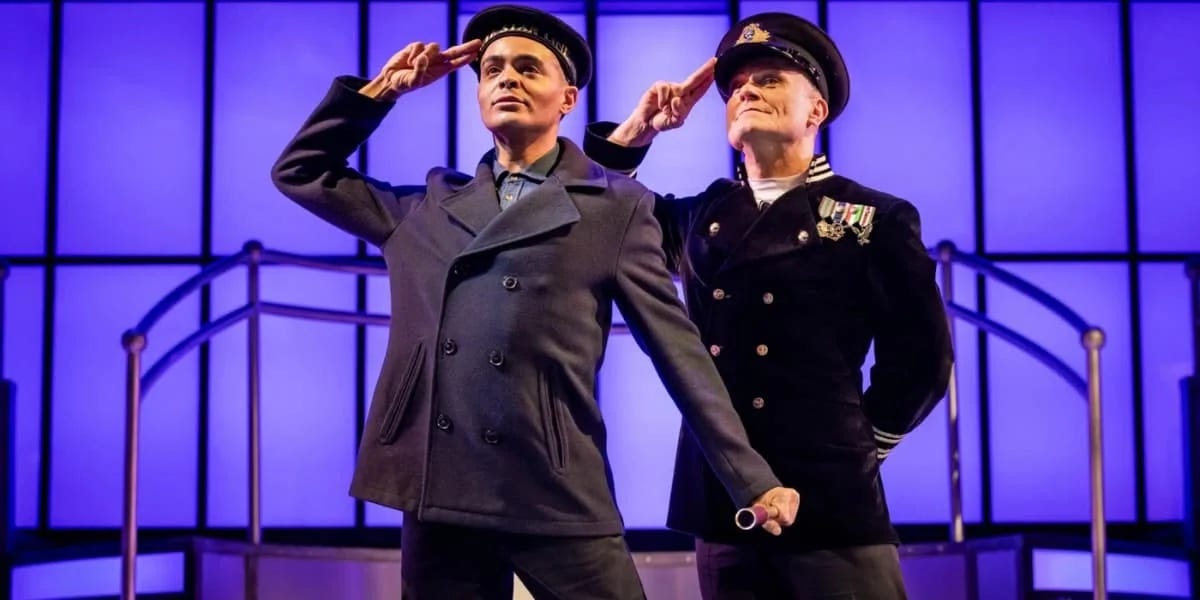
One of my favourite campy, feel-good British shows is Beautiful People based on the memoirs of Barneys creative director Simon Doonan and featuring Olivia Colman. The sometimes-surreal, always-heartfelt show had a two-series run on BBC Two in 2008-2009. One of its stars, Layton Williams, has found himself in another feel-good production after celebrated turns in Rent and Cabaret. A new role that has earned him an Olivier 2025 award for Best Actor in a Supporting Role for playing The Iceberg in the wacky, wildly enjoyable reimagining of the movie Titanic.
Titanique—itself an Olivier 2025 award-winner for Best New Entertainment—is told through the perspective (and songs) of Celine Dion. That means that even when the show reaches eyeroll-worthy absurdity, it makes you smile until your face feels like cracking. And that’s because the brand of kooky kindness that Celine Dion practices in all her endeavours comes across in the characters’ vision of impending doom. The show makes dying in a watery grave somehow uplifting. And when you boo the caricatured villains—Rose’s verbally abusive mother and Rose’s scheming fiancé, Cal Hockley—you boo them with relish.
And it has to be said, the production does wonders with a single, low budget set that is a deliberate rip-off of the one from Anything Goes, as the characters themselves are the first to point out. The props are so outrageous and the performances so delightfully big that you forget that you’re staring at the same basic backdrop the entire play.
Book your tix if a gleeful trip to the bottom of the sea with Jack, Celine and “the diamond of the ocean” sounds like a blast.
Avoid if you require substance with your overpriced champagne.
3. Stranger Things: The First Shadow
For anyone who has watched all four seasons of Stranger Things, Henry Creel is a known entity—the boy who becomes Vecna, the sadistic ruler of the Upside Down. For everyone else who has no idea what any of those words mean, Stranger Things: The First Shadow may be a bit bemusing but you’ll still get heapings of late-50s teen romance, comic relief and psychological horror in a standalone story. Sure, there are many Easter eggs for longtime fans and it’s a thrill to experience the show’s signature chapter headings and rapid intercutting live on stage, but knowing or not knowing the references does not affect one’s overall comprehension of the central thrust: a disturbed boy with psychokinetic abilities trying to embrace love (with Patty Newby, who may just find her way into Stranger Things 5) beneath a spreading shadow of evil.
An official prequel that was first conceived in part by the Duffer brothers after the release of season one and written by staff writer Kate Trefry as she was also writing the upcoming fifth season of the TV show, First Shadow matches up well with the character lore. The only real headscratcher is why the older Hopper and Joyce would not clue in that they had dealt with a Vecna-level threat before. Regardless, suspend any disbelief and this satisfying origin story delivered with airtight precision by veteran director Stephen Daldry (Billy Elliot, The Hours) will serve you thoughtful dread. And the fun of watching the play-within-a-play that Joyce is putting on at Hawkins High balances out Creel’s traumas and the horrific pet deaths that, as we know from true crime stories, are often linked to serial killers’ early years but nonetheless disturb.
I had a more enjoyable time at Titanique, with its janky jubilance, but Stranger Things: First Shadow is more impressive overall. This is due in large part to the seamless technical wizardry that captures the whiz-bang energy and VFX wonders of the TV show; not to mention the tireless performance of lead actor Louis Healy (brother of the 1975 lead singer Matty Healy). Healy is asked to deliver a Shakespearean level of dramatic highs and lows while being poked, prodded and levitated—and he does it marvellously even on a Thursday night.
Want to Go Behind the Curtain?
The Netflix documentary about the show (with the unwieldy title Behind the Curtain: Stranger Things: The First Shadow) captures the nail-biting pressure of all the furious rewrites and tech snafus that go into such a huge production, which, if audiences don’t respond positively, can easily fall into obscurity along with the budget. Thankfully that did not happen with First Shadow, which is now playing both in London’s West End and on Broadway.
Book your tix if you are eager to be immersed in a TV-level production with all the palpable chills of live performance.
Avoid if Stranger Things and horror, in general, are not really your thing.
2. Moulin Rouge
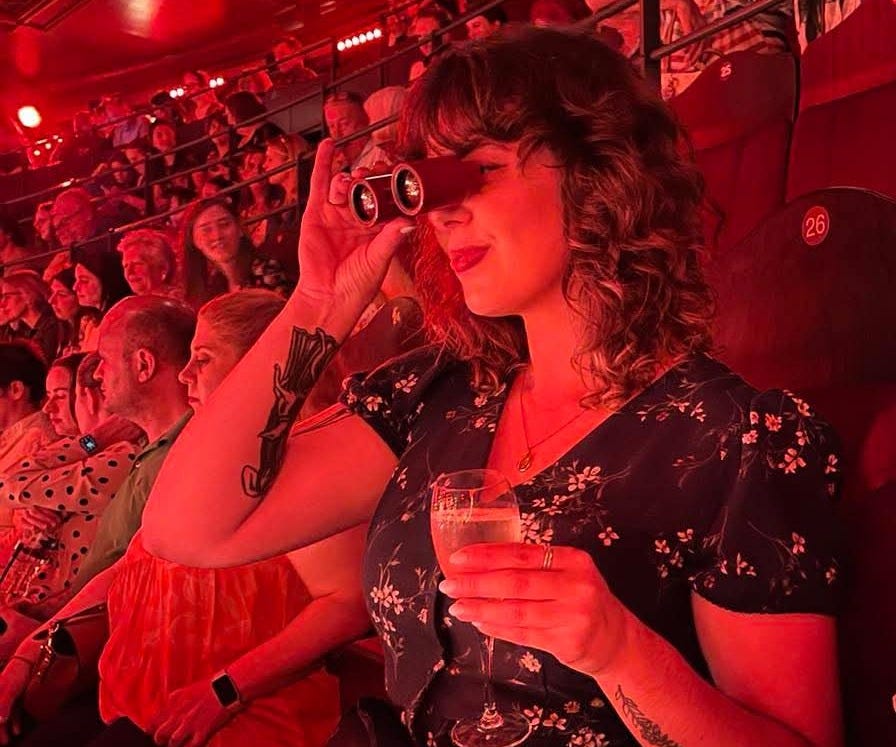
This crowd-pleasing musical bursting with rousing renditions of modern hits like Lady Gaga’s “Bad Romance” and Sia’s “Chandelier” and golden oldies like “Sympathy for the Devil” is a silly, spectacular experience. While managing to make me (begrudgingly) appreciate Katy Perry’s “Firework” thanks to performer Natalie Kassanga’s emotional take, it also pulls off harrowing realism, heightening the dangers that Christian, Satine and other denizens of the nightlife face in a world of pervasive poverty and powerful gangsters.
The show doesn’t nab the top spot because, for me, it fails to stick the landing, culminating in a mishmash of moods and hastily wrapped up storylines that centre Christian in a way that makes sense for the movie but not for the way the stage adaptation—for a time—emphasises Satine’s perspective. This is not, as a line near the end states, simply a story about a boy who comes to Paris. Or, at least, that’s not what the reworked script has been telegraphing for nearly three enthralling hours.
But, in terms of craft, Moulin Rouge! has the other musicals on this list beat. The detail-rich sets capture Belle Époque era Paris with a mixture of grit and heightened Romanticism, whether we are looking out over rooftops towards the Eiffel Tower in the distance or a giant Eiffel Tower rolls out on stage to be accompanied by an umbrella-toting Christian and twirling trapeze artists. This fusion is enhanced by lighting effects and choreography that react to the story beats, as well as song mash-ups that gain potency rather than only exist to serve public tastes (though they do that too).
In one indelible scene, Christian and artist Toulouse-Lautrec discuss Satine’s backstory on a darkened Montmarte street, confetti from a previous scene now rubbish on the cobblestones. There, Toulouse sketches in Satine’s pre-Moulin Rouge life in a way the movie never attempts, while two male lovers pass, entwined, cigarettes burning in the shadows.
The Props—How Did They Pull Those Off?
Moulin Rouge! The Musical is filled with so many props that descend / light up / trigger a laugh / explode that the operation can seem mind-boggling in its complexity. How do the stagehands keep it all straight? This YouTube video created by the touring show has the answer: talented artists running a tight ship. And labels. Lots of labels.
My favourite behind-the-scenes tidbit is that the glowing absinthe bottles and glasses, which make for a showstopping effect when Satine appears in the guise of the Green Fairy, are all controlled by buttons on each individual prop.
Book your tix if you like lavish musicals big on “spectacular, spectacular” and pumped with earworms, while also not shying away from realist depictions of sexuality and violence.
Avoid if you are steadfastly loyal to the film version and a stickler for endings.
1. Elektra

As far as Greek tragedies go, Sophokles’ Elektra is as bleak as they come but poet Anne Carson’s reimagining is as fleet as it is hypnotic; this trim 75-minute play given no intermission that might sever the tension.
Captain Marvel herself, Brie Larson, disappears into the role of Elektra, a woman unable to move on from her father’s assassination and spiteful towards the one who orchestrated it: her mother (a phenomenal Stockard Channing). With her shaved head and punkish duds, which she wears like armour, Elektra retreats to the blaring safety of a microphone. She is ready to scream out her frustration rather than listen to the insights of those around her, Larson’s voice work punctuating the pessimistic repetitions of the script in a volley of “no”s.
Each element of the staging is saturated with meaning. The circular stage constantly rotates, adding to the relentlessness of the resentments; the sense that tragedies are right around the next rotation and, in the end, unavoidable. At times, a paint gun sprays across the stage towards a rising sheet, hitting whatever comes between it and the canvas—literalising how violence both exults and corrupts.
The Chorus’ harmonised reflections—which, during the post-performance Q&A with the actors, I learned are carefully controlled through sound cues in hidden ear pieces—act as logical warnings in a situation ruled by illogic. These women of Mycenae underscore how stubbornness can outdo sense when one operates from a place of grief. Elektra sees only the red of vengeance and her hamartia (i.e. fatal flaw) causes her to believe that this end goal is honourable; that she is not adding her own wrongs to the equation.
Not every moment of the dense, heady play made sense to me, but every second was riveting.
What about the blimp?
A blimp hangs over the proceedings but is never referenced, let alone explained. The after-show Q&A between the classics scholar (and decidedly prickly) Edith Hall focused on the role of the Chorus as defenders and the ways harmonization and the “no”s worked logistically, so it didn’t help clear up the mystery.
In an online conversation with a fellow fan, we discussed our own theories. The woman I spoke to posited that “the general theory about the blimp, which I share, is that it represents the gods or one of them.” This intrigued me, making me think of how the gods are always watching the Greeks from above, ready to soar or flame out like the Hindenburg.
“Yes,” she agreed, “which leads you to question who/what are our new gods.” Rather than the Hindenburg, she leaned more towards Goodyear due to “the winged foot of Mercury logo…interesting that their blimps were actually first developed for military use and are now just ads that transmit overhead coverage of sports events.”
Her mention of Mercury made me think that the blimp could be a nod to the Underworld (since Mercury guided souls there). A constant, hovering reminder that this play is a tragedy and moving inexorably toward the grave.
Whatever the intention, these types of loaded, enigmatic choices are what make Elektra such an unforgettable feat of classical-to-modern storytelling, and why it earns my top spot.
Book your tix if you prize impassioned artistry at every level and are fine not always knowing what’s going on.
Avoid if you want to leave the theatre smiling and not stroking your chin in thought.
My husband, whose taste in theatre runs towards “fun and funny” and less towards “dour and self-serious,” has a different order of preference. If, like him, you are looking mainly to decompress on a night out, then his list compared next to mine might help you choose your next West End (or Broadway) performance.
7. The Great Gatsby
6. The Mousetrap
5. Elektra
4. Stranger Things: The First Shadow
3. Book of Mormon
2. Moulin Rouge
1. Titanique
Happy theatregoing,
Mikey

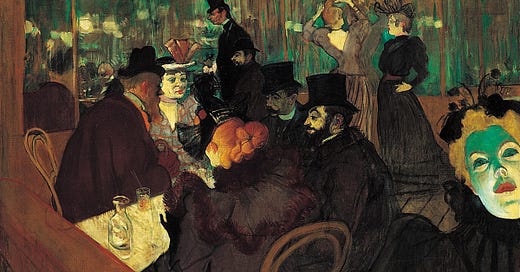



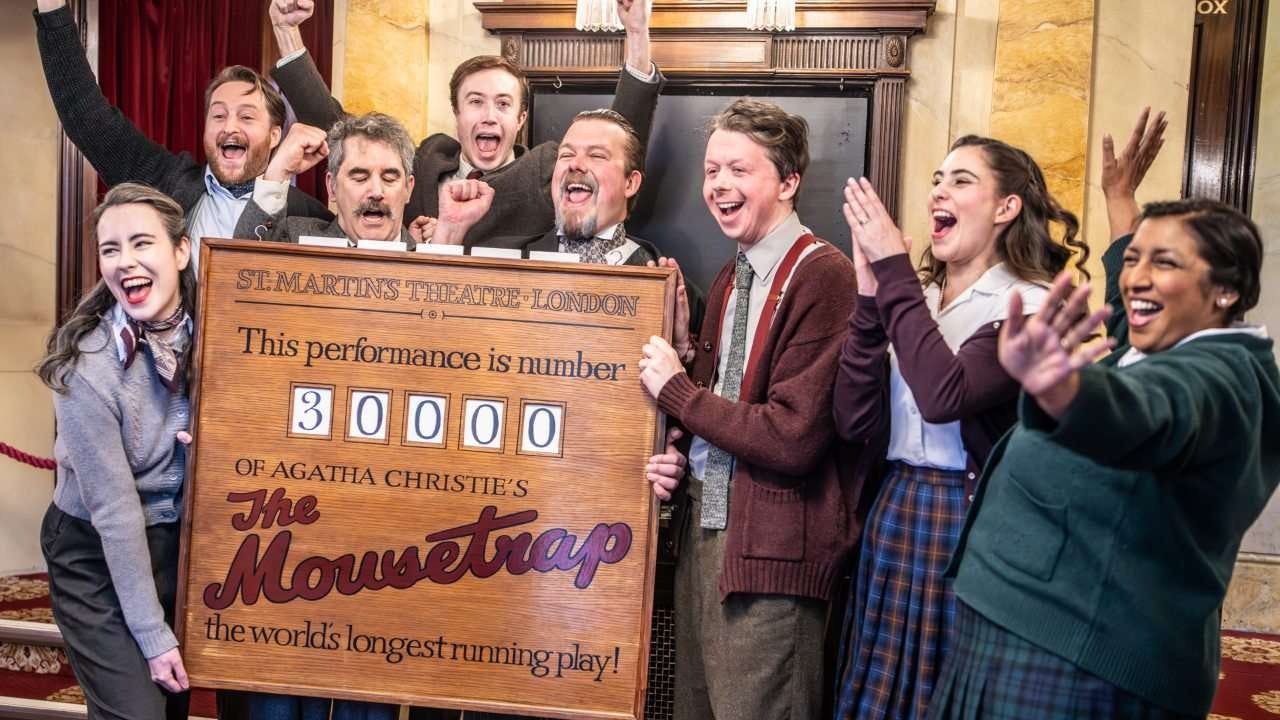
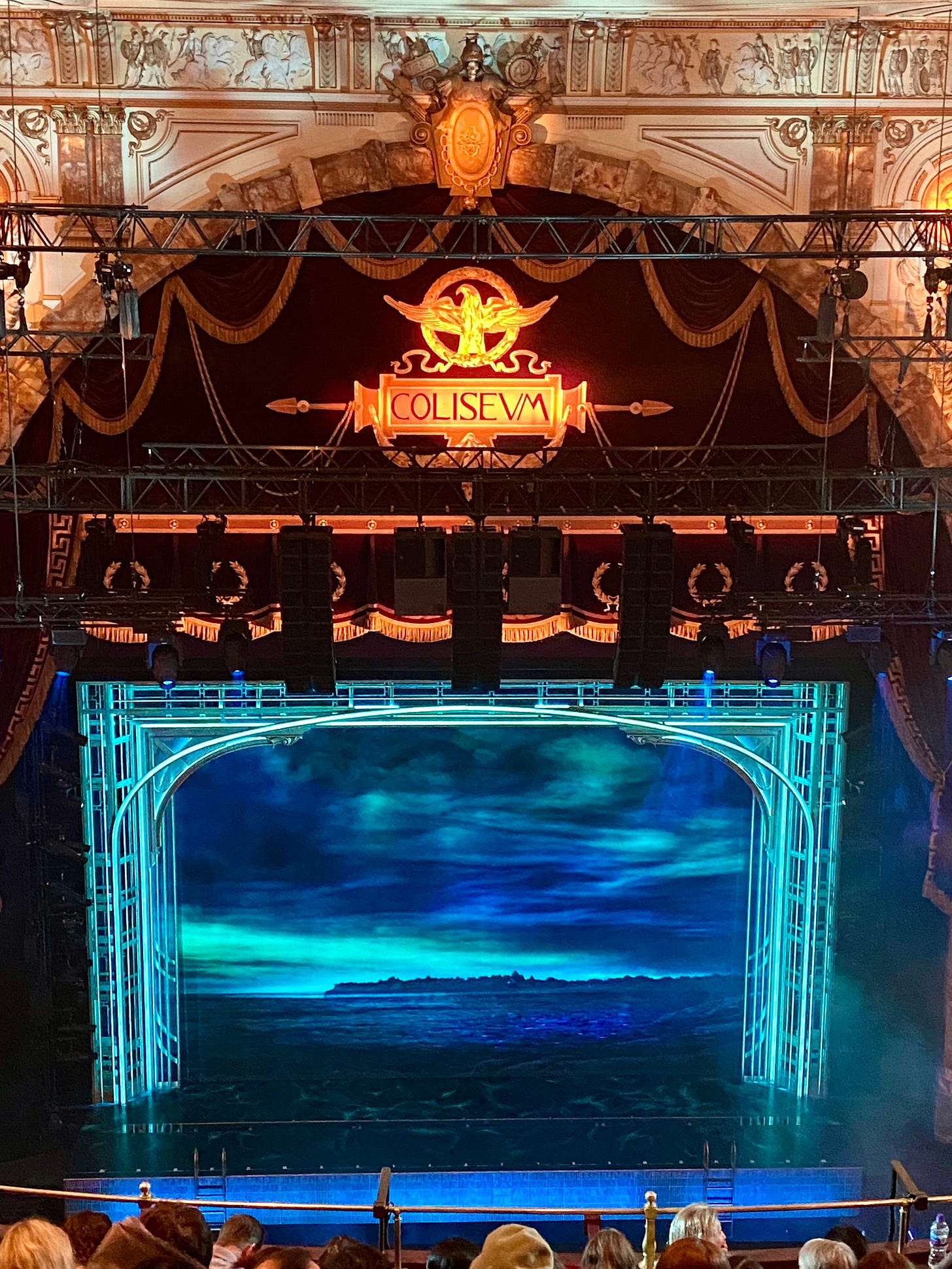
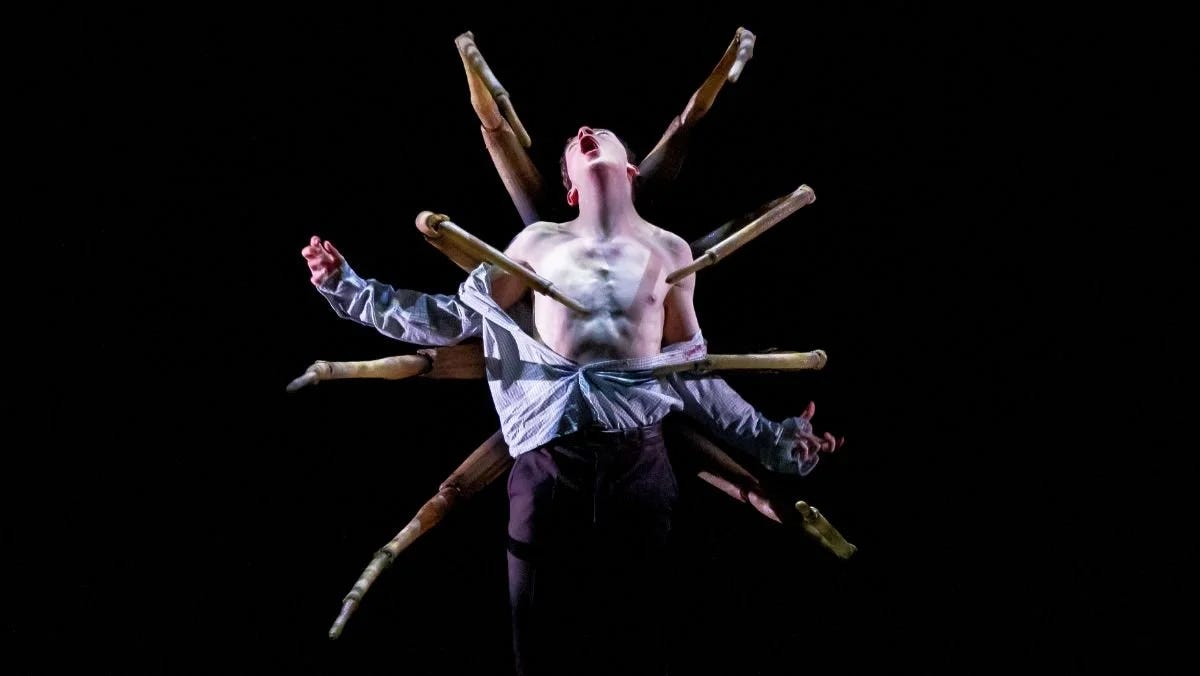
I love your reviews, Michael, of these West End plays and musicals. Especially because you are very careful to not be dismissive or nasty - even of the performances you weren’t especially keen on!